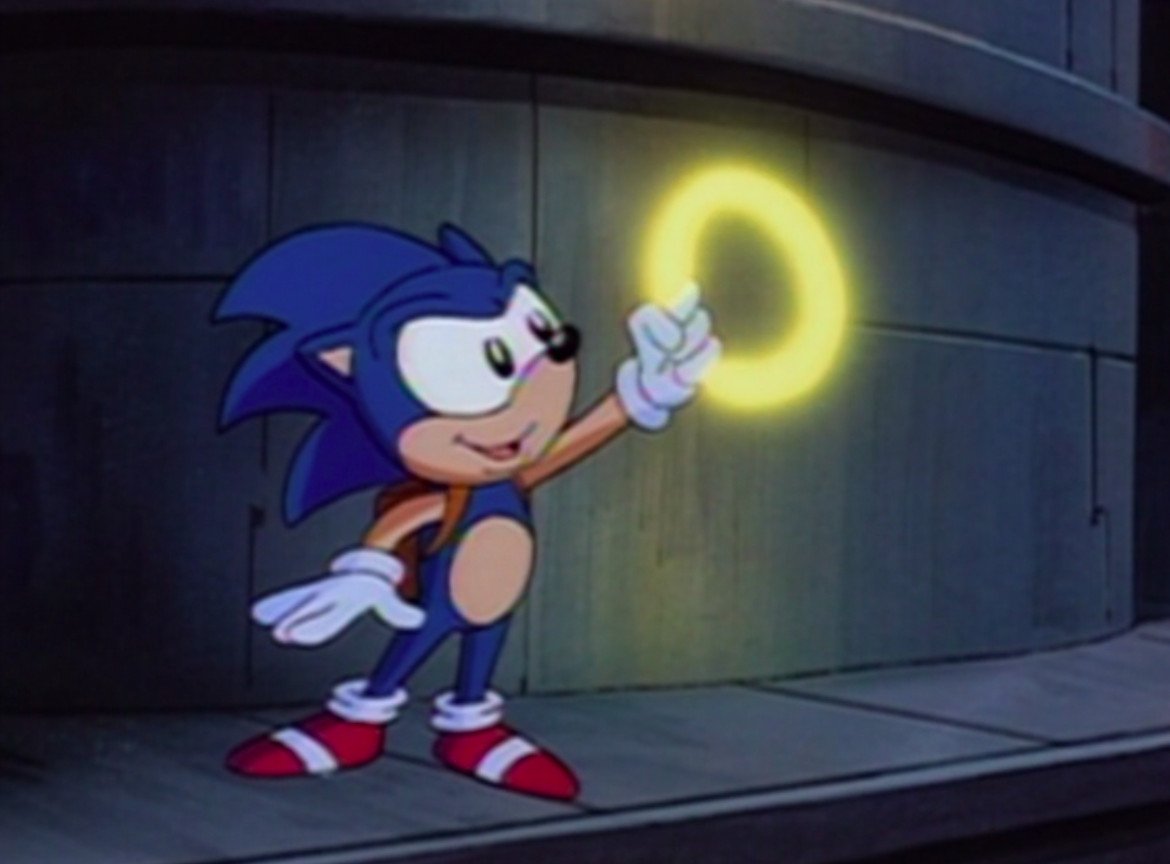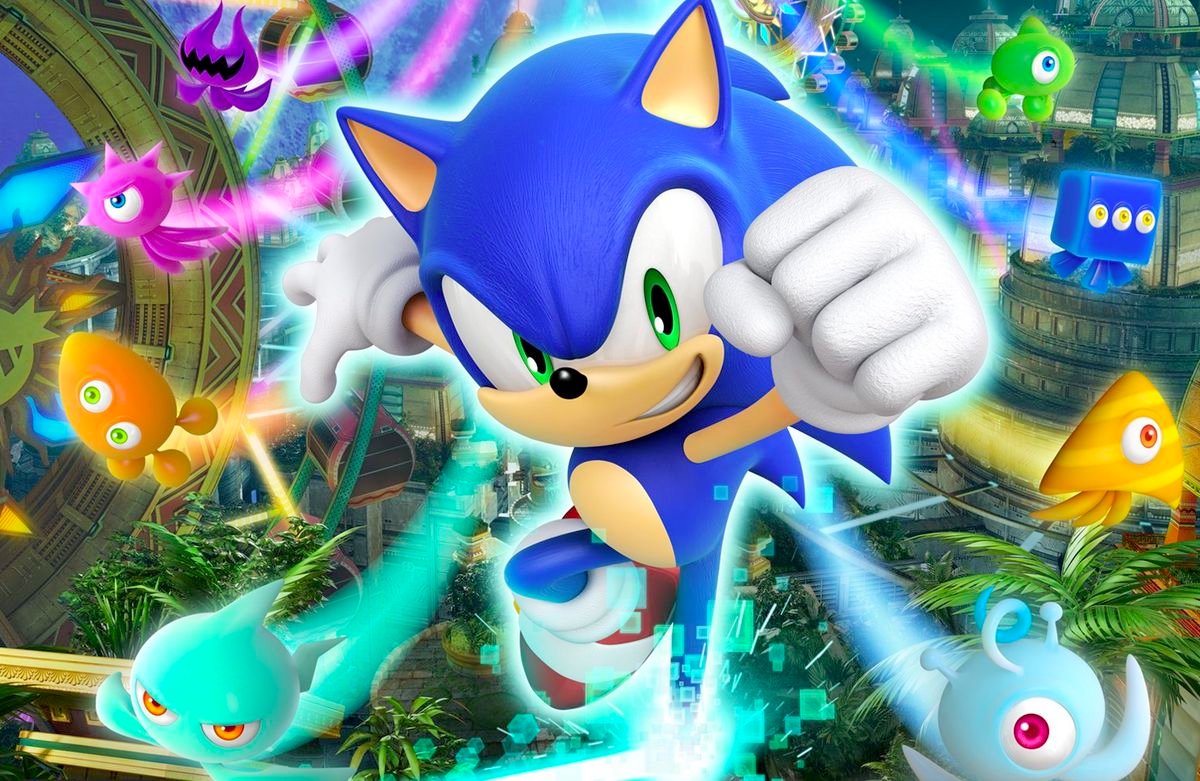What really happened after Sonic lost to Mario
Al Nilsen, a former Sega of America marketing director, tells it like this: There was a time in the early 1990s where Sonic the Hedgehog was more popular in the United States than Mickey Mouse. Hes based this on something called a Q Score, or quotient score, which ranks consumer appeal and familiarity of brands, assigned by a company called Marketing Evaluations.
Sure, Sega had Nintendo and its mascot, Mario, in its sights: The comparison and rivalry between early consoles and characters had been present for decades. But Mickey Mouse was the golden character everyone was chasing, according to former Sega of America director of marketing services Ellen Beth Van Buskirk Knapp. Mario, she said, wasnt so far behind the Disney mouse at the time he was often the second most beloved and recognized character.
The higher the Q score, the more highly regarded the item or person is, Knapp said. We worked very hard at enhancing that Q and initially, that meant we had to make believers out of traditionalists. I remember a meeting at Coca-Cola where the chief marketing executive wore sunglasses and gave us 10 minutes of his time. We did not convert that one. But we did get Sonic on cereal boxes and in kids meal boxes. As a result, his fame grew.
At the height of his popularity, Sonic reached that top spot. Sonic was everywhere: His games were undeniable hits, he starred in cartoons, his toys were in McDonalds Happy Meals, his face adorned cereal boxes, and his large blue body flew high above crowds at the Macys Thanksgiving Day Parade.
He didnt hold onto that top spot for long, though. As time went on, Sega struggled to keep up Sonics quality and consistency, and it struggled to compete as a hardware manufacturer which further hurt Sonics prestige. Meanwhile, Nintendo saw success after success with Mario.
Nintendo had a clear and concise vision for Mario, his story locked in as if it were in stone. But Sega had a different approach to its character, throwing whatever it could think of at the wall to see what would stick and a lot didnt.
Yet the messiness of the franchise, and Segas willingness to try new approaches with Sonic including multimedia collaborations, movies, and TV shows has left the blue hedgehog with a unique reputation. Mario may have won the console wars, but Sonic has earned something even more important: our hearts.

Image: DIC Entertainment/ABC
Sonic the Hedgehog was created by Naoto Oshima and Hirokazu Yasuhara as Sega and Nintendo were jockeying for market dominance in the early 90s. The company wanted a mascot, like Mario, that could sell games and consoles. The story of Sonics origins has been told over and over again: The original character had a busty girlfriend, fangs, and played in a rock band, as former Sega of America CEO Tom Kalinske told Polygon.
The marketing team convinced Sega Japan to drop the girlfriend, rock band, and fangs creating a more friendly, but still cool, character. Gameplay prototypes, showcasing how fast Sonic could go to collect those golden rings, sealed the deal in that regard: I believe this is when he was called Sonic, and basically we fell in love with him to be our lead character, Kalinske said.
Sonic the Hedgehog and Sonic the Hedgehog 2 conquered the market. Sega really came for Nintendo in launching these games. The games themselves stood on their own merits as unique, colorful, and challenging, but the company used that cool factor to push against Nintendo as if Mario was the dorky, inferior brother and Sonic was one of the cool kids. Segas marketing push played into this idea, directly referencing Nintendo as a less cool childs toy in its advertising and its infamous mall tours, where Sega put Sonic the Hedgehog on Sega Genesis directly against Super Mario World on the SNES.
Since Sonic showcased speed and colors never utilized in a video game before, and since Super Mario appeared to be more iterative, this side-by-side comparison was not really a fair fight, Knapp said. Sonic rocked it.
Knapp said she got to dress in the Sonic costumes during these mall tours little kids wanted to hug Sonic, and teenagers wanted a high-five.
I was a co-conspirator for them, she said. I actually got pushed around a little bit by the teenagers. It was an active and yet totally full of respect interaction. Now here was living data for me to take back to Sega and fuel the industry takeover. I had no idea how far up we could go, but I had a real hope.
The games were successful, and that marketing only made them more so. Soon, Sonic was on everything TV, McDonalds Happy Meals, shirts, and shoes. Of course, he also became the first video game character to debut, infamously, as a massive balloon in the Macys Thanksgiving Day Parade in New York City.
Sonic was cool with humor and an attitude … that resonated in the West, Shuji Utsumi, Sega co-chief operations officer, told Reuters in February.
Over the next few years, the Sonic brand became muddied by bad games alongside the Sega Saturn and beyond. The transition from Sonics beloved 2D platforming gameplay was challenging, to say the least. Not all of the games there were awful, but its where the dilution of the Sonic brand began. Everyone knew Sonic as the 2D character who could go really, really fast, and that didnt translate perfectly into the next generation of video game consoles.
Sonic X-treme, Segas first attempt at a 3D Sonic game that was later canceled, was supposed to be the game that bridged that gap between console generations.
Segas goal was to bring Sonic into 3D for the first time and sell new hardware with it, Sonic X-treme developer Christian Senn told Polygon. At that time, the market was abuzz with Sonic 3 and Sonic & Knuckles, both 2D games that had a huge following with great success.
Both Sega and Nintendo wanted to showcase their new hardware and advancements. For Sonic, that didnt work out as planned, and the game was ultimately canceled in 1996, after two years of development. Senn, who also later worked on Sonic Boom: Rise of the Lyric, said the whole process of making Sonic work in 3D was hard. Sonics success, he said, was that his 2D controls were solid simple and tight in a way that felt good.
This key ingredient served as the foundation for the 2D games and sequels, Senn said. Introducing the third dimension to the experience took that 2D control scheme and turned it on its head. The simplicity of movement, particularly moving very quickly, was now gone. Seeing far enough into the distance, not getting stuck on obstacles, and trying to maintain that sense of free speed was very difficult.
Sonic Adventure, of course, debuted in 1998 in 3D on the Sega Dreamcast, with comparisons to Nintendos Super Mario 64. And it reached a similar level of success as Mario 64, too: Sonic Adventure was a definite hit for Sega and for Sonic as a character. Still, it didnt surpass Mario 64. Sonic was officially the underdog.

Image: Sega
Sega stopped making consoles in 2001 and eventually merged with Sammy Corporation, a pachinko slot machine company. Sega still needed its tentpole mascot, but it was no longer trying to sell consoles with him: The company had been trying new ideas with Sonic for a while, stuff like Sonic Spinball and Sonic 3D Blast, but the mainline games started to stray further from what Sonic was known for, and Sega ran into some technical troubles in designing for third-party platforms. While Segas had its fair share of moderately successful Sonic games after 2001, the ones that stand out arent always for positive reasons: That time that Sonic rode a hoverboard in Sonic Free Riders for Kinect, or when Sega swapped Sonic for his edgier counterpart Shadow in Shadow the Hedgehog. Then theres the infamous Sonic the Hedgehog (2006), the game where Sonic kisses his human girlfriend (played by Lacey Chabert), and Sonic Boom: Rise of the Lyric, a Wii U exclusive thats sometimes described as the worst Sonic game of all time. (A Sonic Boom: Rise of the Lyric developer, who asked to remain anonymous to speak freely on the game, joked that he wears that title developer of Sonics worst game as a badge of honor.)
Further diluting the character, there was Sonic Unleashed, wherein the hedgehog turned into a werewolflike animal called a werehog. Sega and Sonic Team tried everything. And despite these games having problems, they werent all bad for Sega. Thats because there was always something to learn. [Sonic the Hedgehog (2006)] was trying to push further into a more modern game, Sonic the Hedgehog producer Justin Lambros with Sega of America told Polygon. Triple A studios were really delivering that [at that time]. That was the idea. There were lessons learned there, like from the strange reaction to the kiss that brought Sonic back to life.
People didnt want to see Sonic kiss a woman. They wanted to see him go fast. At the very least, they wanted a game without technical problems. Sonic the Hedgehog (2006) is one of a few Sonic games that struggled with performance on top of a lack of focus: Its not unplayable, but in 2006, Sonic the Hedgehog was repeatedly criticized for a frustrating camera and a litany of bugs. Its a legacy thats held up throughout the years, with Sonic the Hedgehog often referenced when talking about Sonics missteps. Lambros attested to that, too. He told Polygon that he was giving a presentation at his kids school when another student asked what the worst game hed ever worked on was. Lambros didnt have an answer, but another kid did: Was it Sonic the Hedgehog?
David Corless, vice president of publishing at nDreams and former Sega global brand director with Sonic, told Polygon that there were bits of these games that were truly good ideas, which may have helped the brand save some face. Sonic Unleashed is one of them, for instance: While the game certainly wasnt a critical hit, there were parts that stood out like gorgeous graphics and enjoyable gameplay, at least in parts where Sonic was not a werehog. Even Sonic the Hedgehog has some redeeming qualities the soundtrack is pretty dang good, and the dark storyline was interesting, at least.
When Corless joined the team in 2010, on the back of some of the worst games, he figured the problem was that Sega needed to be more intentional with how the character was used but it wasnt a scenario where one wrong move was going to kill Sonic.
The problem, Corless said, was that the character was being used to sell new peripherals or consoles, like the Wii U exclusive or Sonic Free Riders on Kinect. [Sonic] was doing well, but hes just using IP to sell peripherals, Corless said. What kind of Sonic game can you make that fits that peripheral? Well give you a bit of money to do that. Thats the kind of position Sonic was in.
Just as hed come into the company, Corless said Sega had done a yearlong study on Sonic as a character who his audience was, and what they thought of him. Sonic was still a beloved character, just one who had dipped his toes into too many projects.
It did impact the franchise a bit, Lambros said. I mean, there have been less well-liked Mario games, but not really technically inferior or that didnt meet that Nintendo standard. And thats the interesting difference of being a single-platform developer.
Sega has acknowledged that Sonics had some troubles. In 2015, Sega Games CEO Haruki Satomi said there had been some titles that partially betrayed trust in players.
We did our best to build a relationship of mutual trust with older fans of Sega, Satomi said, but looking back, thereve been some titles that have partially betrayed that [trust] in the past 10 years.
Sonic Mania, which was praised for its classic Sonic style, seems to be part of that strategy in building back a Sonic fanbase. But Sonic, after all, is more than a video game mascot these days. Hes a movie star: Sonic the Hedgehog came out in 2020 starring Ben Schwartz, and that movie was the sixth highest-grossing movie in 2020. Its a fun movie that brings back the nostalgia of Sonics original games and shows. Sonic the Hedgehog 2 is slated for release in April this year. From this success, theres already a third movie planned alongside a Knuckles TV spinoff starring Idris Elba.
Last year marked the 30th anniversary of the Sonic character and franchise, and the characters certainly been riding that nostalgia. Mario, yes, has been celebrating his birthday, too, but Nintendo hasnt captured the appeal in the same way: Hes still just Mario. But Sonic? Hes back in the Macys Thanksgiving Day parade as an extra-large balloon, hes trying out Vtubing, and he has a very sassy Twitter account.
Its [the] essence of Sonic his speed, his attitude, his key qualities that I want to keep in mind as we look forward, creating new expressions and creations for many years to come, Sonic Team character designer Yuji Uekawa told Polygon in 2016.
Sonics struggles havent been all bad for his image. Hes securely an underdog now, beloved by many for that messy path hes been down. His cultural impact all of it, even the bad parts are core to his story and how, precisely, hes been able to weather all this bad press. People love Sonic even though there hasnt been a standout game in quite some time: Hes got a new Lego set. A Netflix show. A new game! Sonics doing better than ever. And whats Mario got at this point? Chris Pratt?
